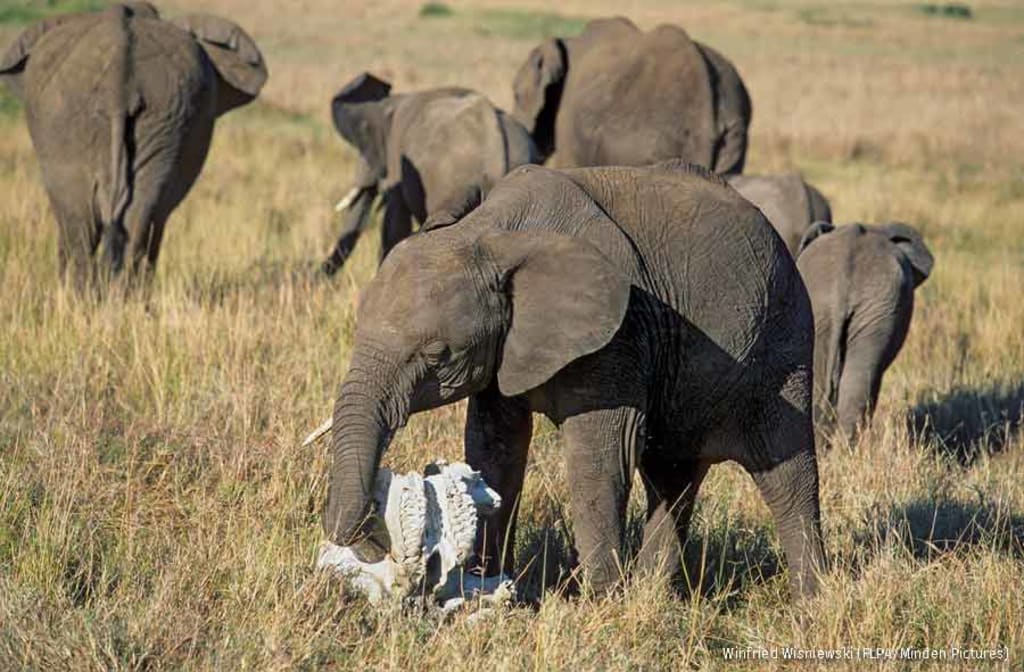The Silent Language of Loss: Decoding Animal Reactions to Death
A closer look at how various species perceive and respond to the concept of mortality

Tahlequah, an orca, gave birth in 2018. However, her daughter passed away in an hour. But Tahlequah stayed inside her body. And for the following seventeen days and one thousand and sixty kilometers, she maintained it on top of her own, diving to recover the body every time it slipped away, even after it started to decompose. Tahlequah behaved in an odd way, changing her eating and travel schedule.But was she grieving, or was she just perplexed? Do animals that aren't human grieve? This is a difficult question. Charles Darwin contended in 1871 that a variety of emotions, including grief, are felt by other animals. But many scientists have always been reluctant to impose human feelings on other creatures, particularly in the lack of a reliable bridge between our minds and theirs.
Additionally, it has been hypothesized that they may exhibit erratic behavior following a death for other adaptive purposes. And for a time, the conventional wisdom held that only humans were capable of thinking and feeling, while other creatures just responded and survived. The 20th century saw a growing number of challenges to this idea.For instance, in 1985, Koko, a gorilla trained in some American Sign Language signs, received word that her kitten friend had passed away. After placing distress calls, she looked at a picture of another kitty and signed the words "cry," "sad," and "frown" a few weeks later. A increasing body of research and observations now indicates that certain creatures, such as birds and mammals, may go through what is known as mourning.
Elephant matriarch Eleanor succumbed to breakdown in 2003. Eleanor fell again shortly after another matriarch named Grace approached and assisted her in standing. Grace spoke out, remained by Eleanor's side, and attempted to raise her up again. A woman by the name of Maui came over Eleanor's body after she passed away, rocking back and forth.Elephants from five different families paid Eleanor's body visits over the course of a week. Elephants have been seen carrying family member remains, such as tusks and jawbones, on a few different instances. A giraffe with a malformed foot that made it difficult for it to walk was born in 2010. The calf's short life was four weeks.
Twenty-two additional females and four adolescents watched the calf attentively the day it died, occasionally nuzzling its body. In the
Twenty-two additional females and four adolescents watched the calf attentively the day it died, occasionally nuzzling its body. The mother was still by herself on the third morning and had not eaten, as giraffes typically do all the time. Rather, she remained by her deceased calf, even after hyenas had devoured the corpse. Researchers have also started measuring how other animals react to death statistically.Researchers looked for glucocorticoids, stress hormones that rise in human grieving, in fecal samples from baboons in 2006. The samples from females who had not lost a close relative to a predator assault were compared to those who did. And they discovered that in the month after the death, the baboons' glucocorticoid levels were noticeably higher.
As a result, the baboons' social networks grew and became more robust, both in terms of grooming behavior and the quantity of grooming partners. They reached baseline levels of glucocorticoids again in two months. Also, when carrying their deceased offspring, ape mothers have been seen by researchers to exhibit actions that seem inconsistent.It appears that the mothers' attitudes toward the corpses were conflicted, as seen by their frequent switching between cannibalizing or dragging their child's corpse and tenderly carrying or dressing it. There are enormous gaps in our knowledge about the emotional landscapes of other species. There is still much more research to be done in order to fully understand animal sorrow.
So for now, where does this leave us? Determining whether or not orcas should be kept in isolation or whether dairy cows should be separated from their newborn calves are just two examples of the serious ramifications that arise from discussions about whether or not non-human animals experience emotions like grief.Is it appropriate to treat non-human animals as though they are capable of grieving until further research on the matter is conducted? or presumptively not? Which belief is most likely to be harmful?
About the Creator
Jackson Gitau
Enigmatic Voyager 🌊✨
Ahoy, fellow explorers! 🚢 Embark on an enigmatic voyage with me, the Captain of Curiosity, navigating the seas of mystery and wonder.
Enjoyed the story? Support the Creator.
Subscribe for free to receive all their stories in your feed.






Comments
There are no comments for this story
Be the first to respond and start the conversation.